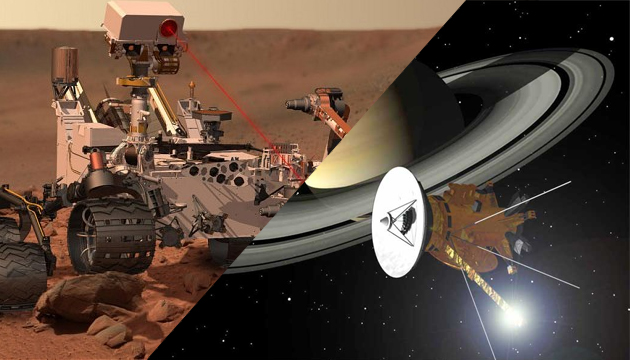If you had to make a choice to shut down either the Mars rover Curiosity or that explorer of the Saturn system Cassini, how would you choose? Would you deliver a pink slip to the young, eager, energetic newbie, Curiosity, who’s been doing a great job and has only begun its work investigating Mars? Or would you force an early retirement on a veteran explorer who has delivered volumes of knowledge of Saturn and its moons in its nine year career?
A hard choice to say the least, especially for two such exciting and high-profile exploration missions, but a decision that could be necessary due to budget cuts at NASA.
It’s nothing new. Choosing to end a mission earlier than planned has been part of the space exploration budget calculus for a long time. Even the greatest space adventure epic of all time, the Apollo missions to the moon, were curtailed earlier than planned when public interest dipped below a critical cost-benefit analysis threshold.
Not every robotic employee of NASA faces layoff or early retirement, however. I recall a time back in the mid 1990’s when I worked at NASA’s Ames Research Center and was visiting the building across the street from my own. I was walking down a hall looking for someone’s office when I passed by an open door and decided to poke my head in. What appeared to be a rather large computer lab opened up before me, and the room had a single occupant: a man probably in his mid-to-late seventies sitting before a computer quietly doing his work.
“What do you do in here?” I asked.
